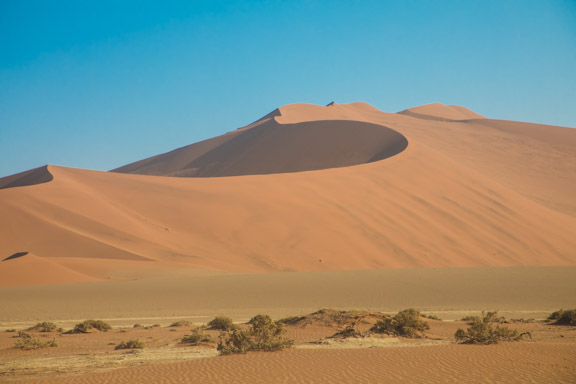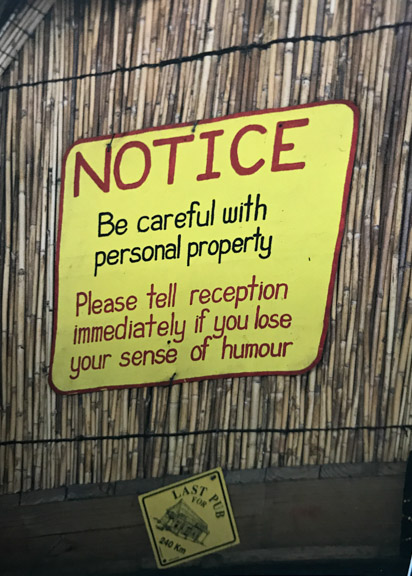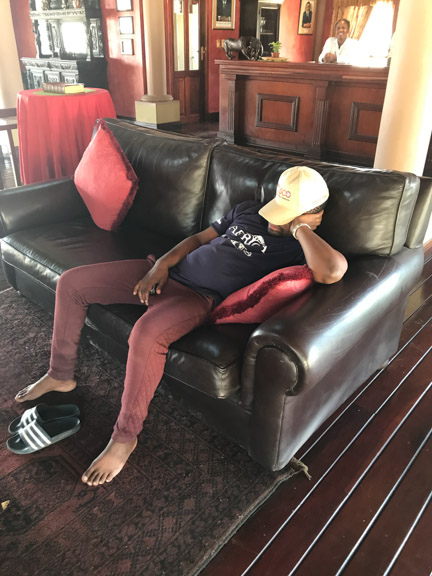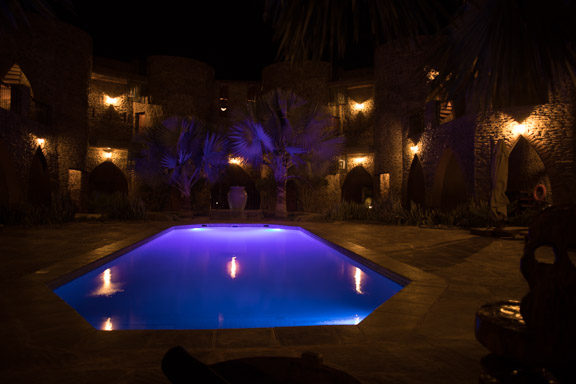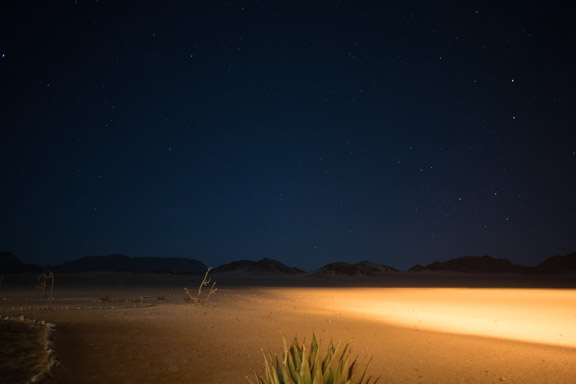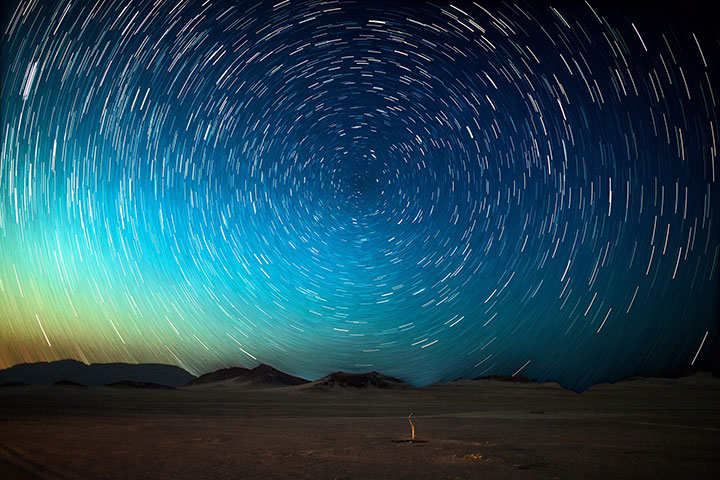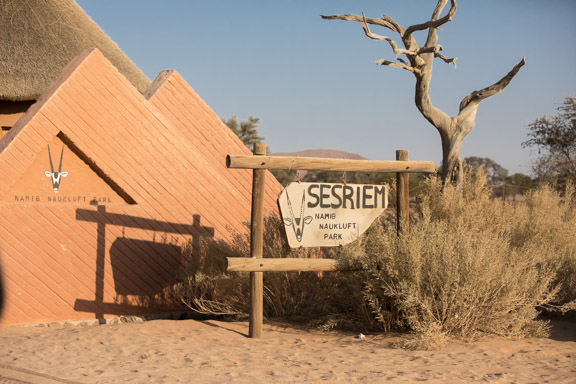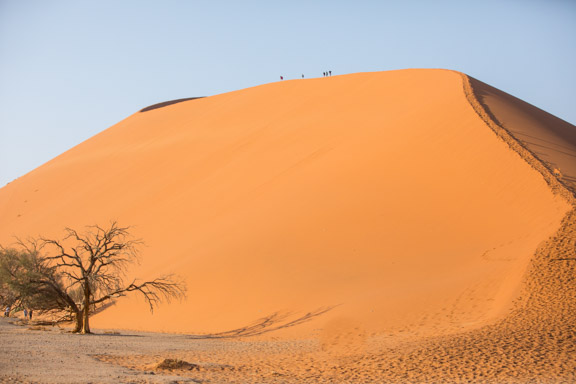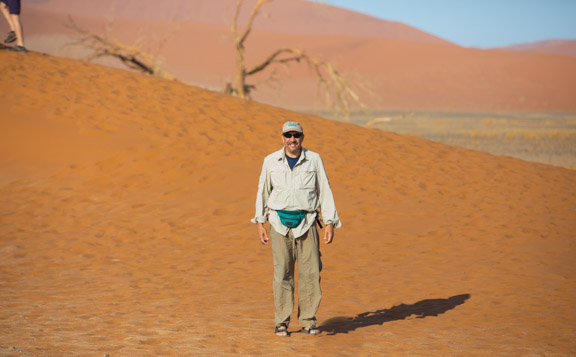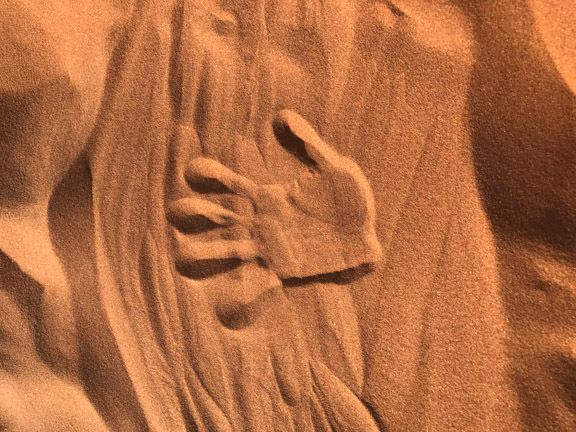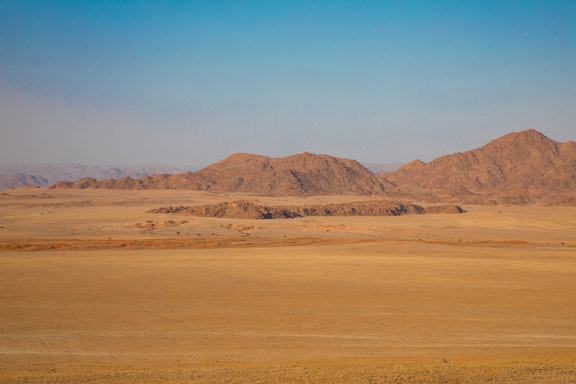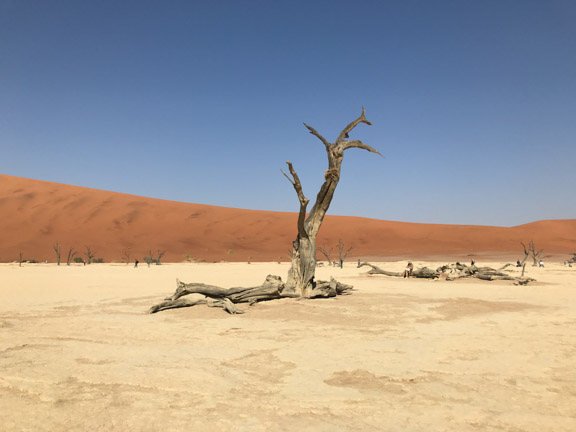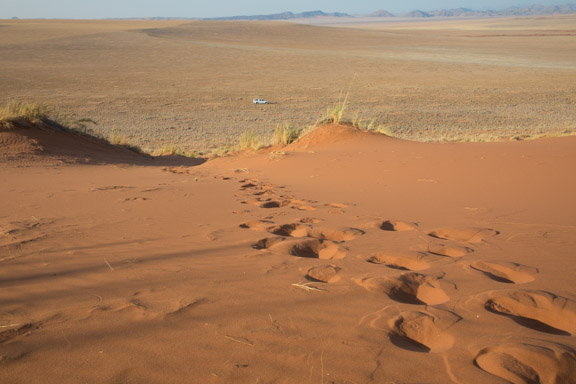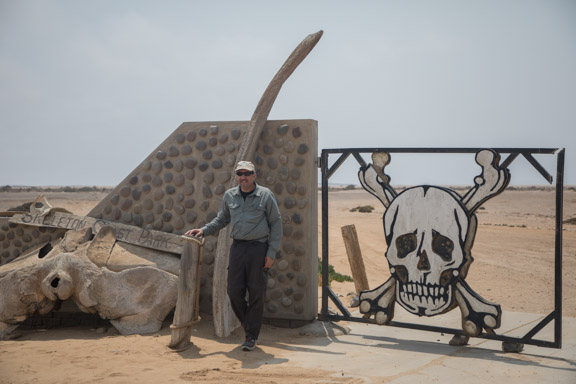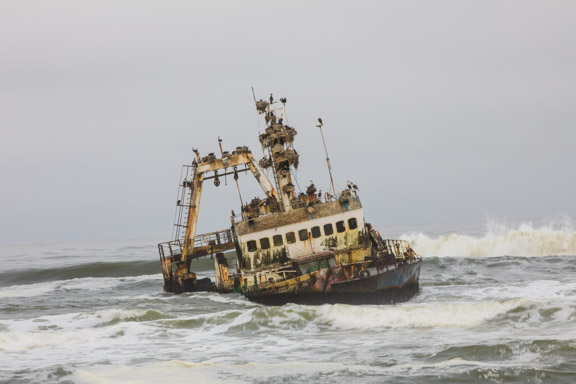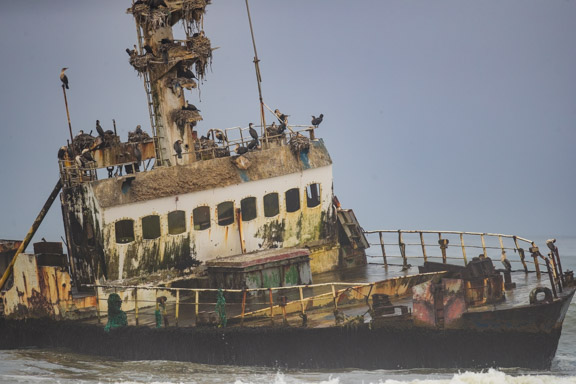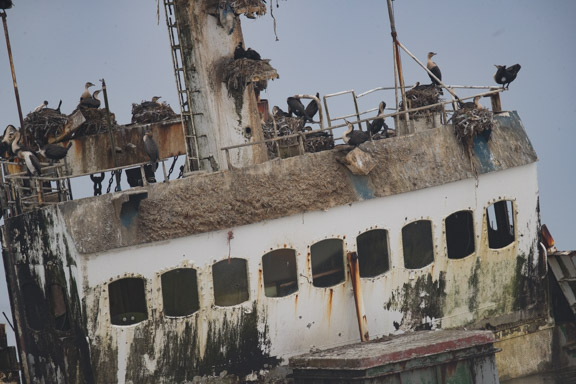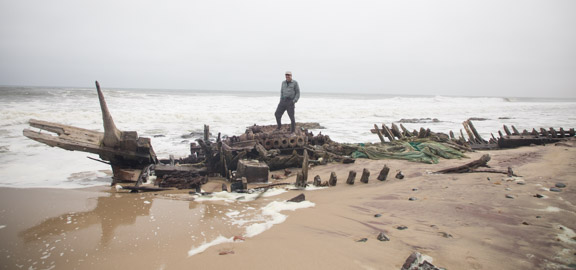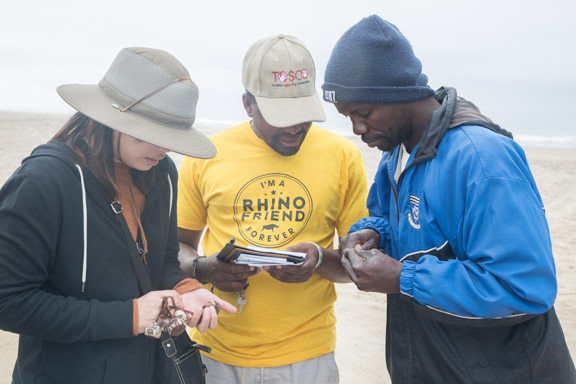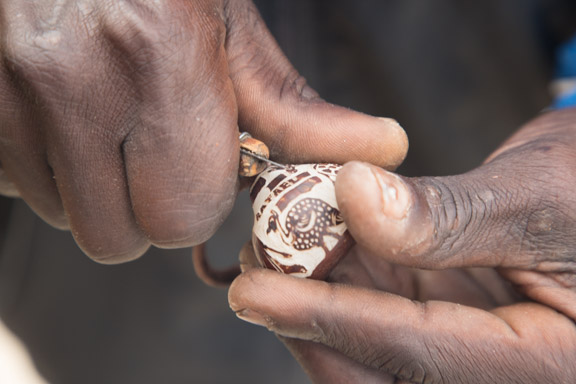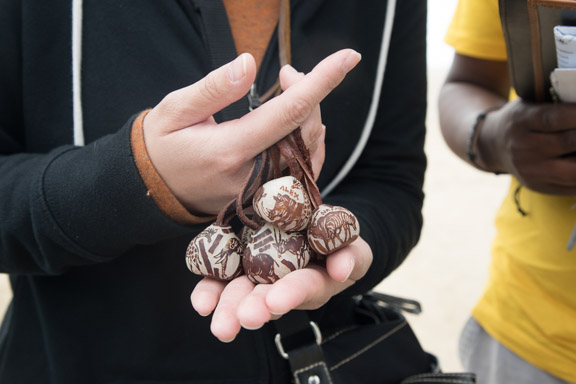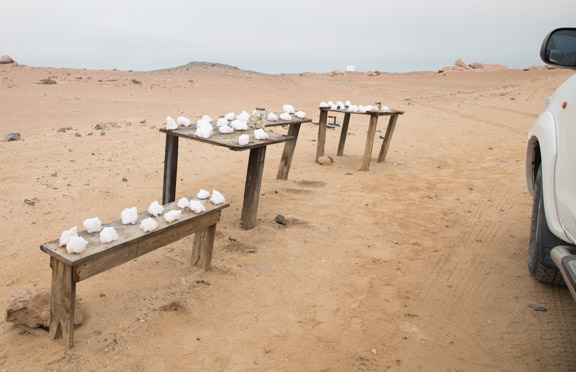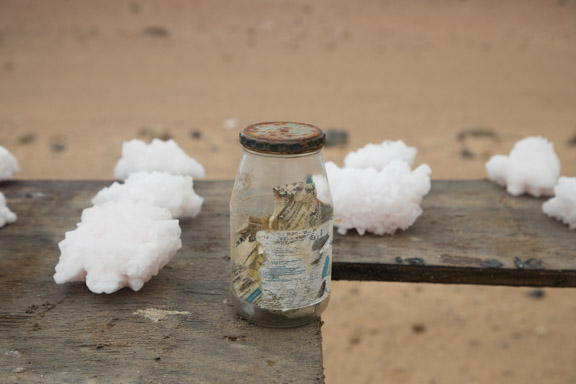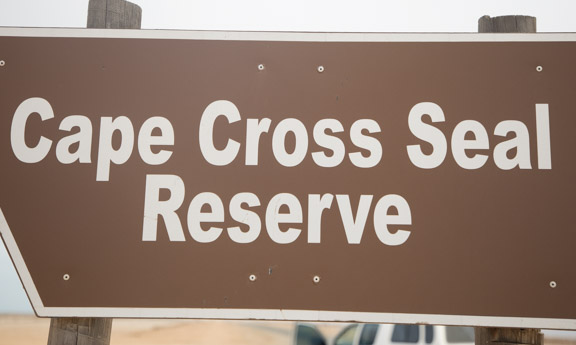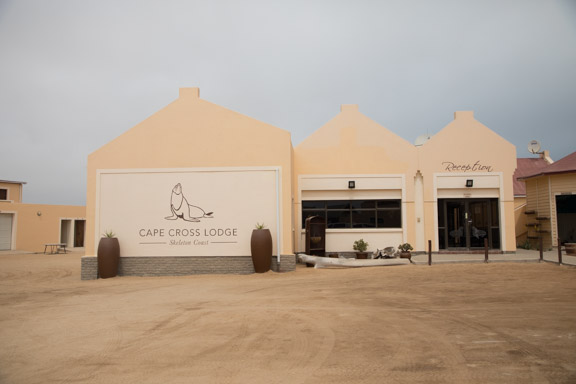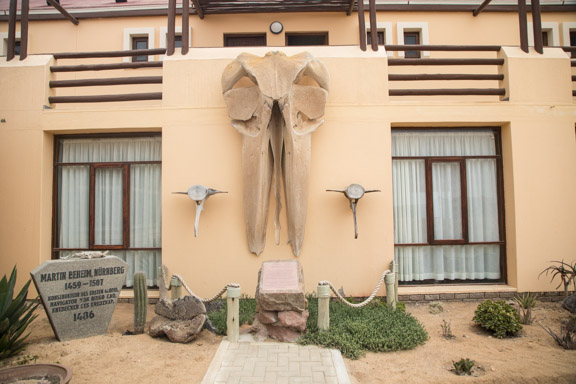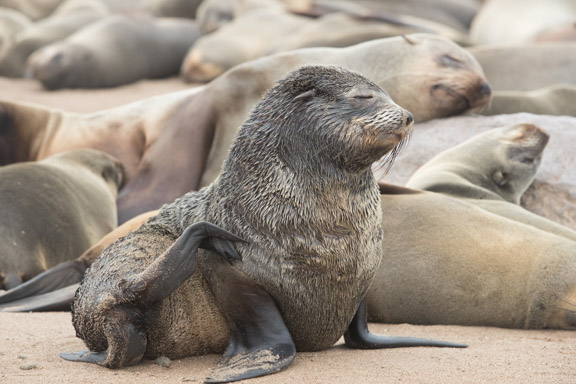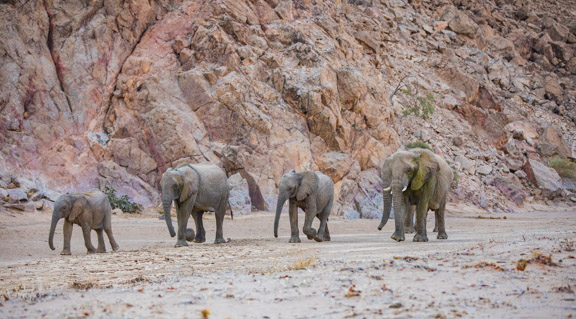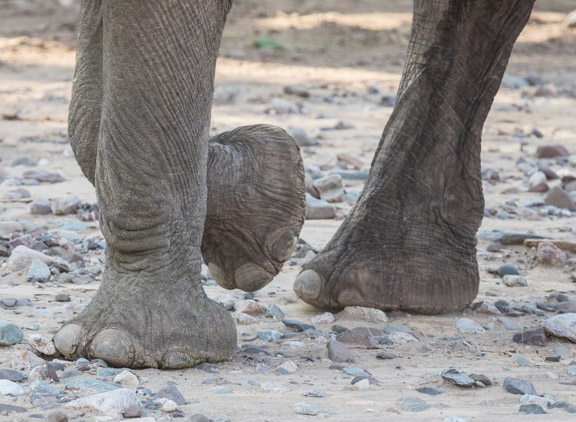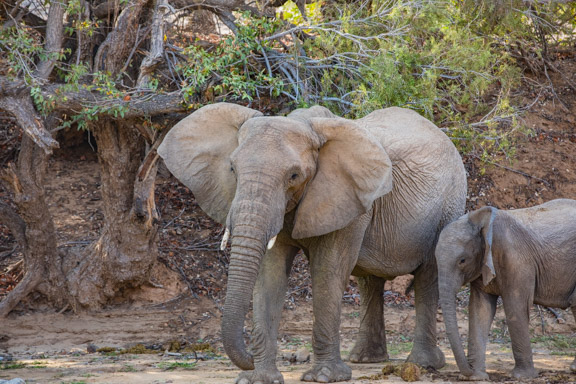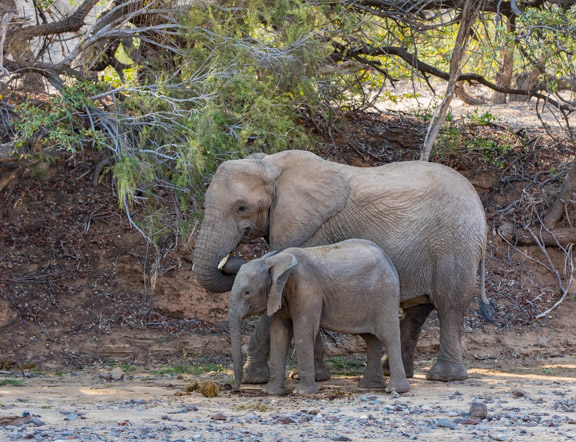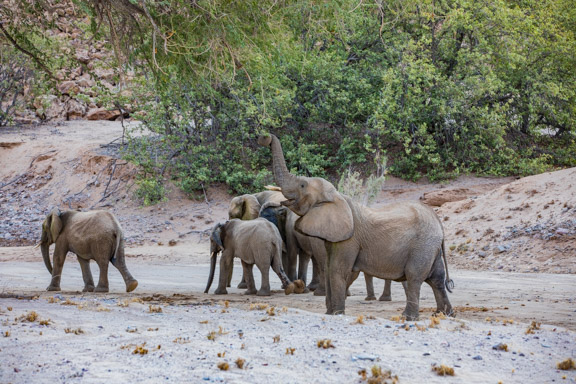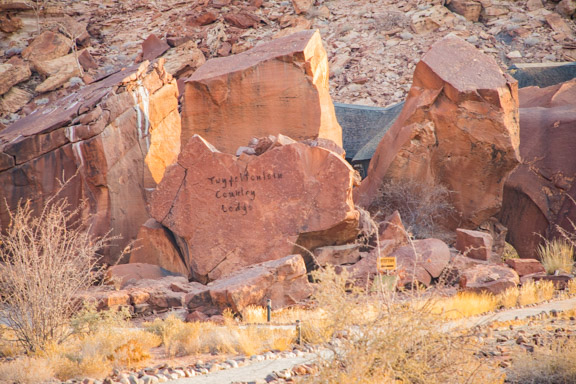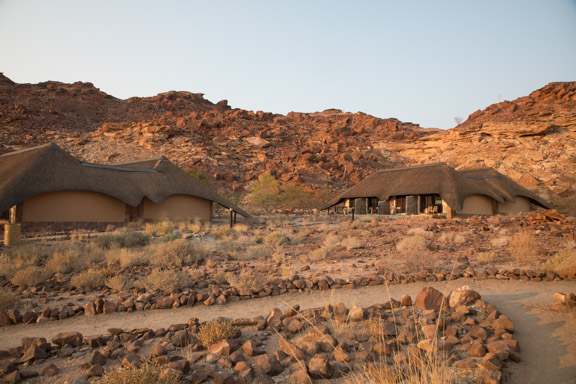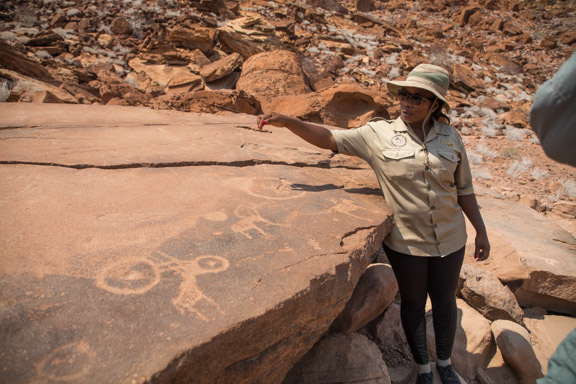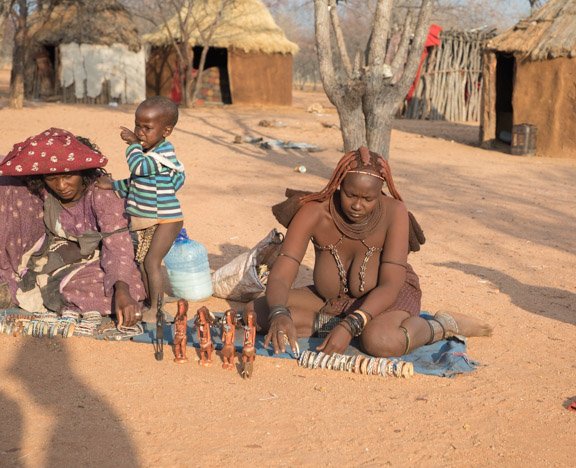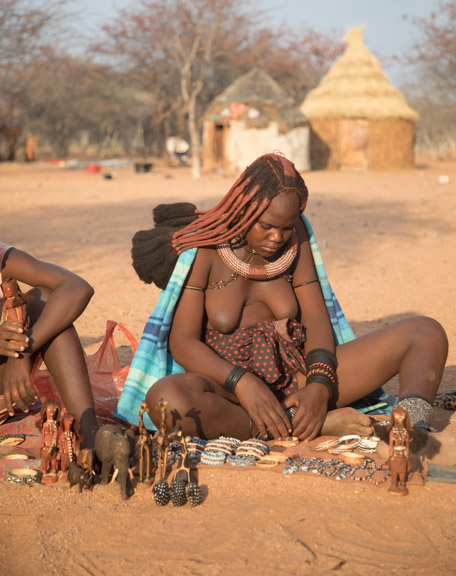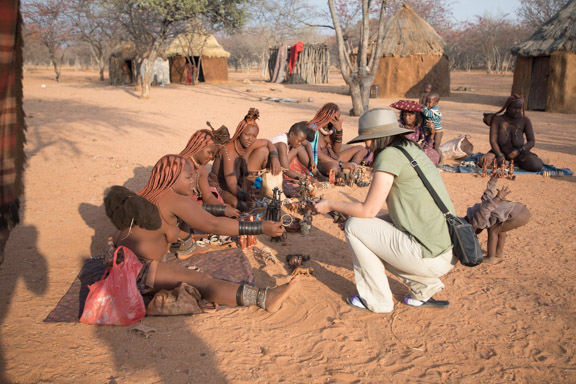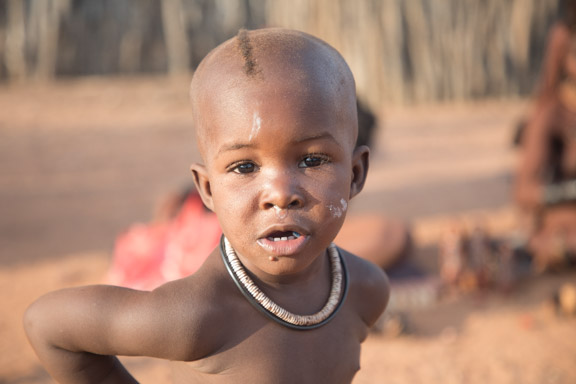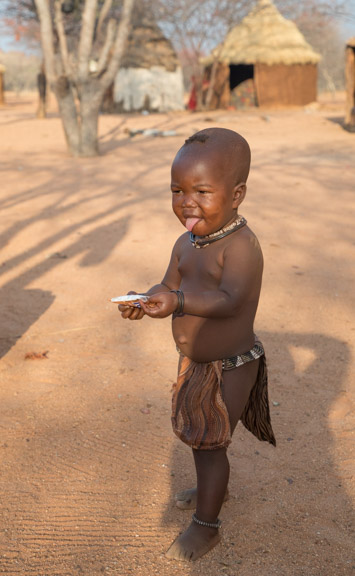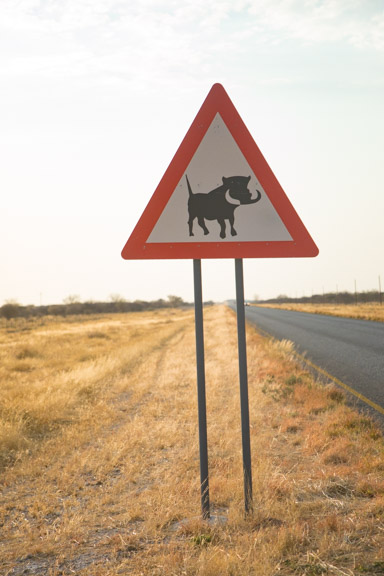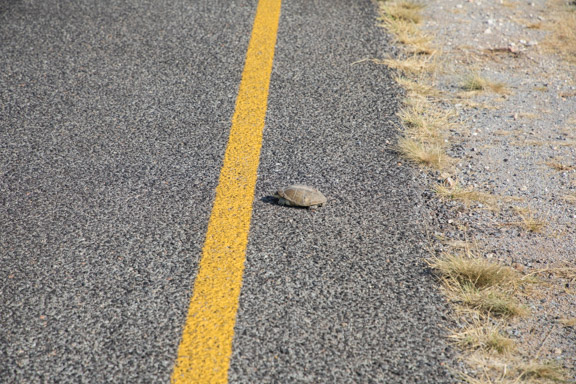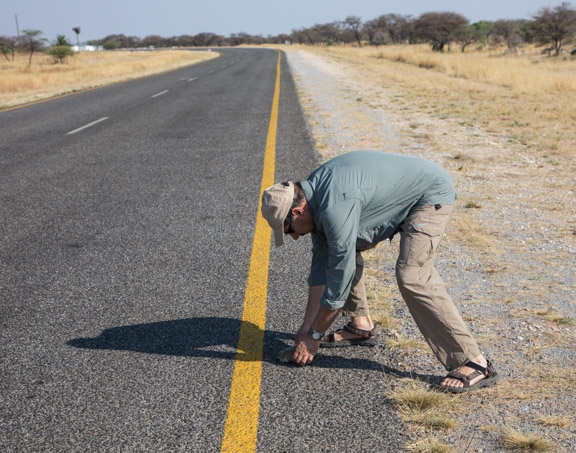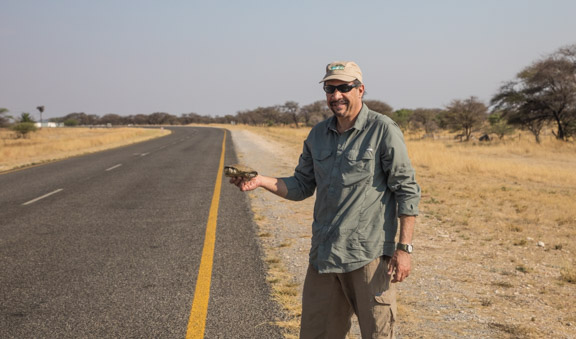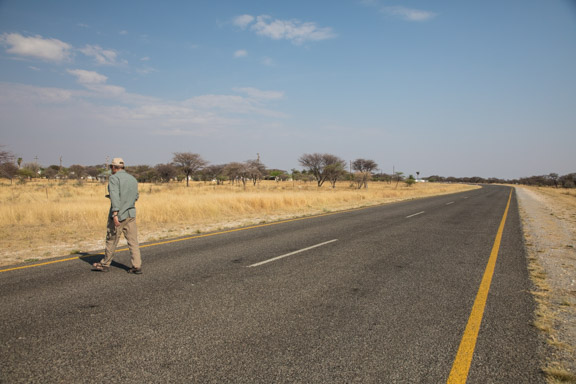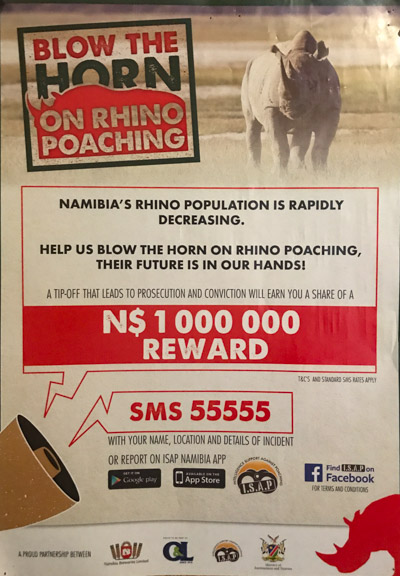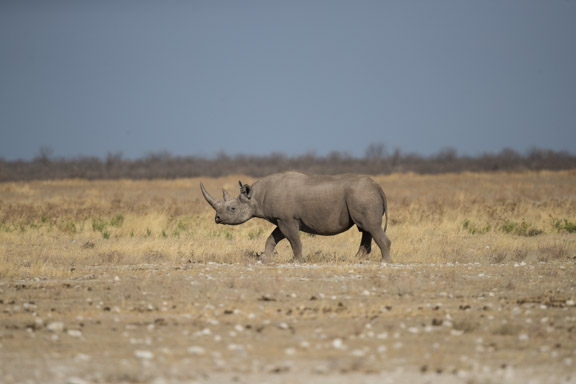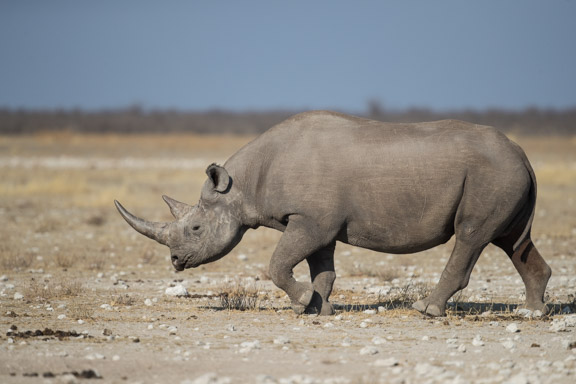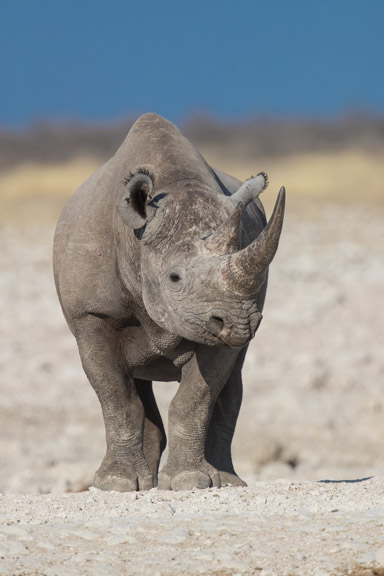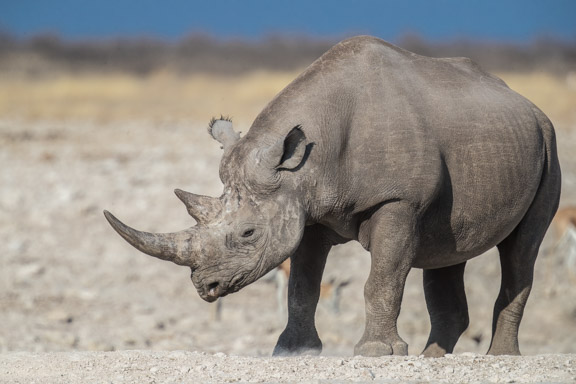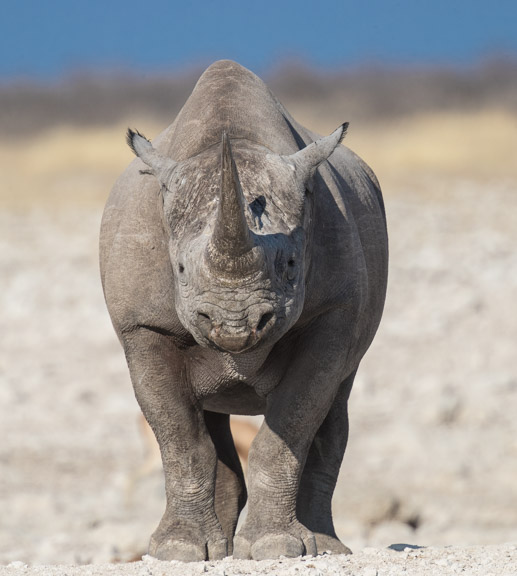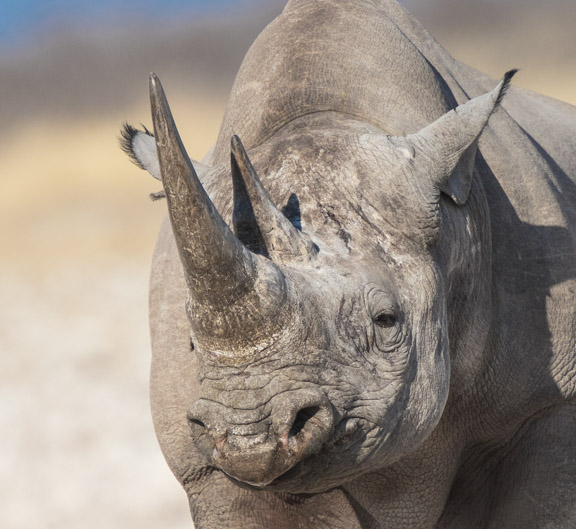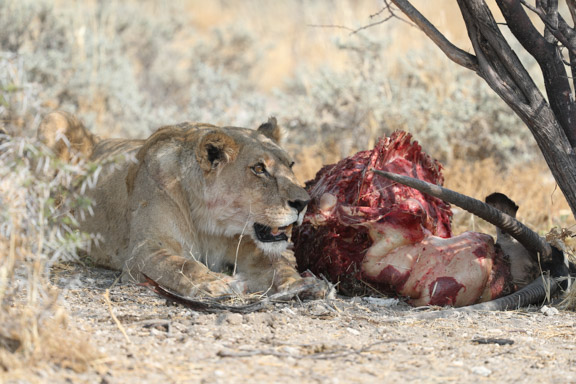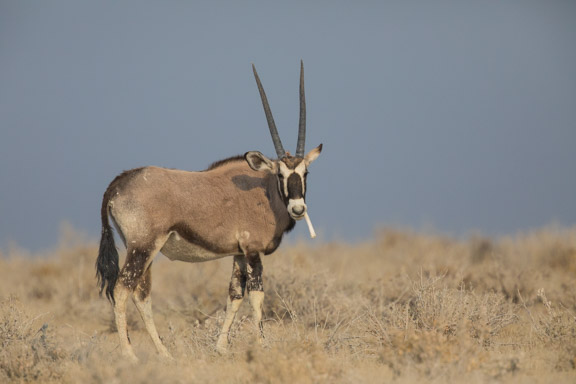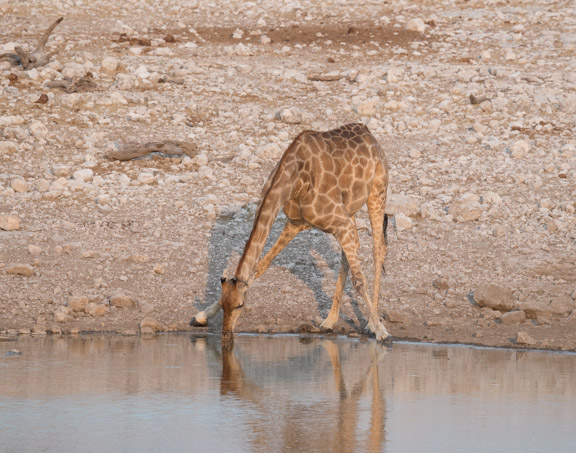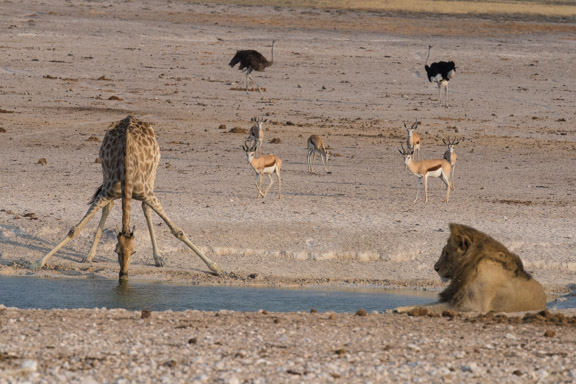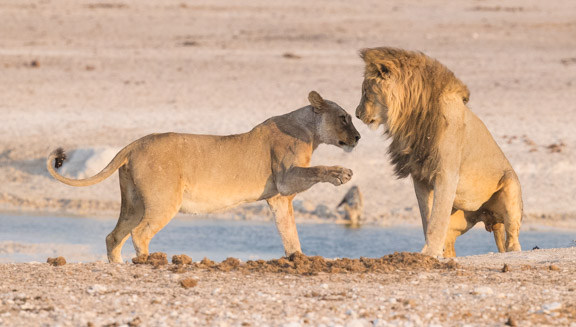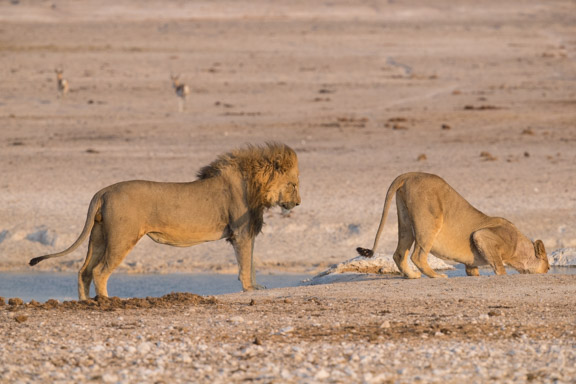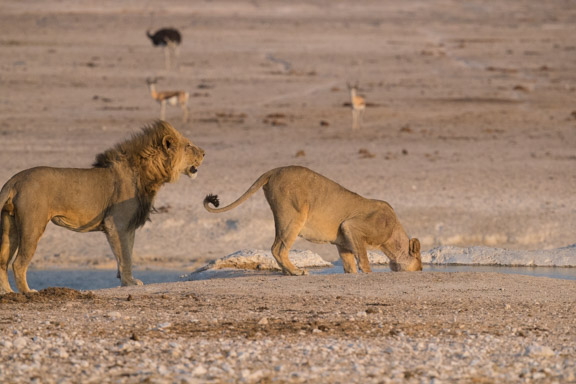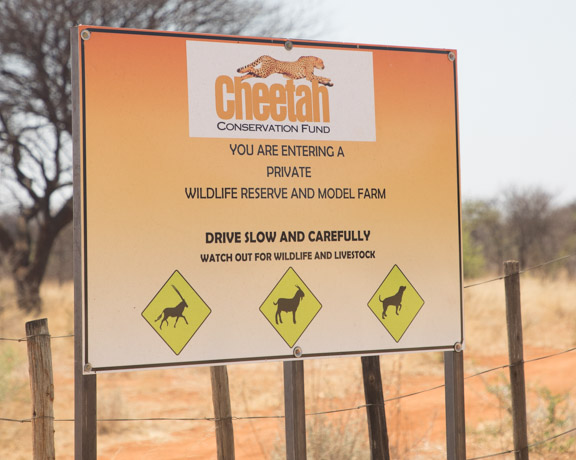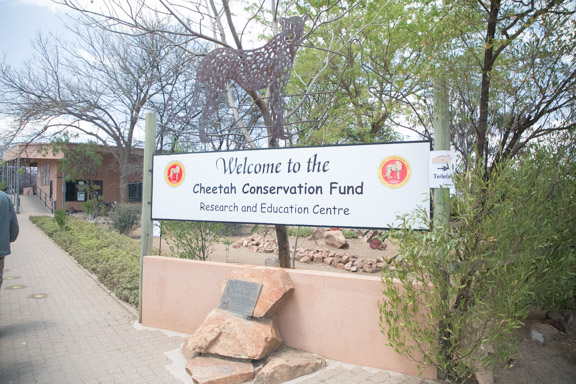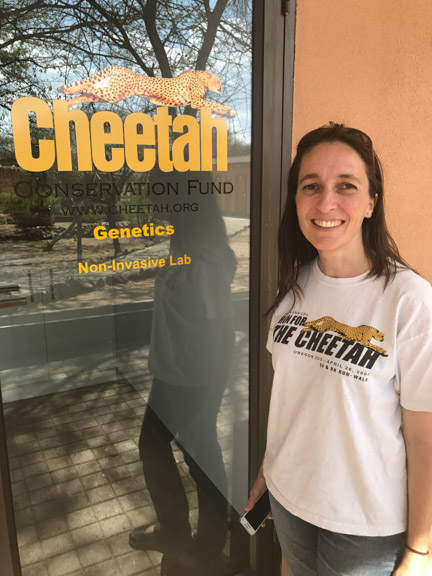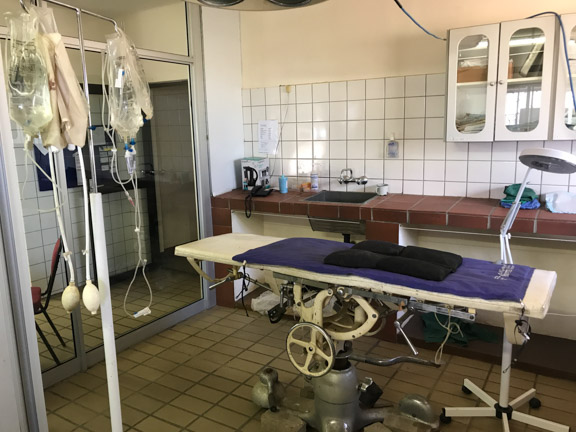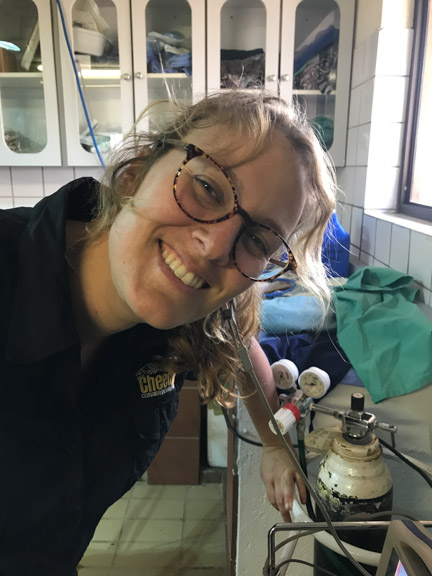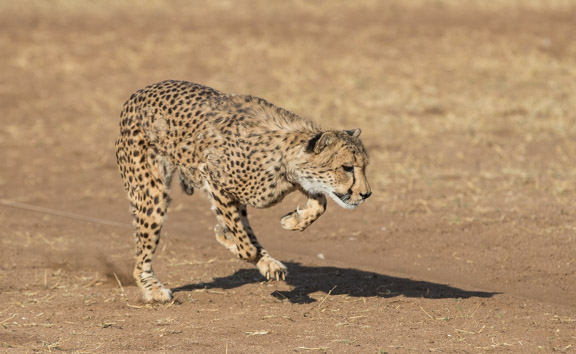After my Botswana trip I met up with a different assistant photographer and went to Namibia. My overall observations of Namibia are very positive; great guide, friendly people, interesting desert, and great wildlife viewing. If you like landscape photography, in addition to great wildlife viewing and photography, Namibia is for you.
Namibia is a desert country, with beautiful sand dunes that go right up to the ocean. There is more to Namibia than desert, but the desert is unique, and is what I will emphasize on this page.
The people that work in the tourism industry want you to have a nice time, and make the effort to help make that happen.
Our guide’s name was Frank. He knew many people, was competent, had eagle eyes, and a warm personality. He went along with all of my antics, including how to say “how much wood could a woodchuck chuck” as he practiced his English. You will hear his efforts in videos several times in this page. Hearing his laugh after he attempts this saying was worth the price of admission!
Frank was one of the best guides I have ever had in my 10 trips to Africa
Frank worked non-stop, never taking a break, and was always ready to go at moment’s notice
His first “woodchuck” lesson
Our trip started in the city of Windhoek. Going counterclockwise from Windhoek, we hit all of these spots, which you will learn about in this page:
Sossusvlei- sand dunes and stars
Swakopmund and the Skeleton Coast- seals and shipwrecks
Twyfelfontein- rock carvings and petrified forest
Etosha National Park- wildlife (especially rhino)
Cheetah Conservation Fund- cheetah
Sossusvlei
After a five hour drive from Windhoek we saw our first sand dunes in Sossusvlei. Of course I had to climb one and leave my mark. After this first dune we spent several days in the Namib-Naukluft National Park exploring other dunes. As we drove around Frank practiced his ‘woodchuck”.
I was still suffering from jet lag when I put the rocks in the sand, so read my message from bottom to top
Even the t-shirts emphasize the sand in Namibia. In case you missed it, this is a spoof on the insignia for Land Rover cars.
Time for some housekeeping after running around in the sand
The Le Mirage is a beautiful hotel in the middle of the sand dunes. I felt like I was in Morocco after seeing this hotel.
The hotel comes alive at night
Camp fires and stargazing were one of the night activities
There was a spotlight on the waterhole to the right
We could watch the animals drink at night
Early evening star gazing
Late night star gazing
The stargazing was great, and thanks to Cindy’s expertise and late nights, we have some beautiful time lapse photos of the stars at the waterhole
I signed up for an early morning balloon ride, but it was cancelled the night before due to excess wind. I have gone on several of these in Kenya and Tanzania, and was looking forward to one over the desert. Maybe next time.
Frank still could not get the second half of “woodchuck” just yet as we drove to more dunes
The entrance to the National Park
When we arrived some people were already at the top
Time to get ready to join these people
Part way up and I was pacing myself
Fun with early morning shadows
This is the limit of my artistic ability in the sand
A little more walking and I made it to the top
The view from the top of a sand dune
We drove to another location that had some interesting topography with trees
Some of the trees grew in the middle of the dunes
Frank took us to one of his secret dunes
The dunes are almost alive, and in a short time our tracks would be gone
The wind keeps the dunes in an ever-changing state
We learned about animals tracks. These are from a lizard, the long line is from the tail
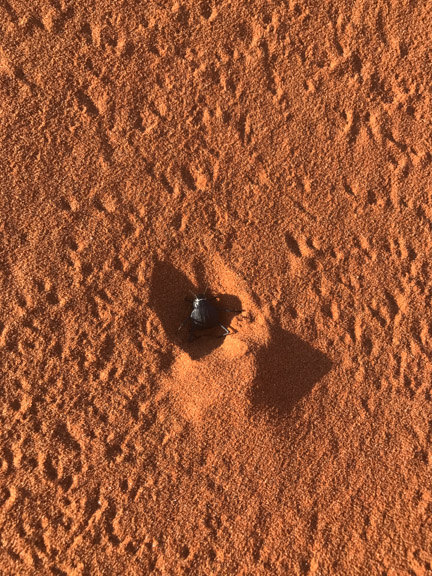
The female that popped out caught us by surprise
Frank pointed out a spider trap from a dancing white lady spider
As we left the dunes it was my our first chance to see an Oryx, also known as a Gemsbok
Time to leave the “Sand Is Fun” area and work our way up the coast
The Skeleton Coast
The waters off the coast of Namibia are cold and rugged. Due to the ocean conditions, and the high level of shipping and fishing, many of the boats have been shipwrecked.
The entrance to the Skeleton Coast National Park
Our first shipwreck was not far from the entrance. Frank asked us if we wanted to swim to it. “I think we will pass this time Frank, maybe next time”.
The birds found this ship to be a good place to hang out
The next ship was a fishing vessel
Before we left the local artisans carved a nut with some names as souvenirs to take back home
It was interesting how they did it so easily
Cindy scored, and got seven of her souvenirs for co-workers at this spot, each with their name carved
As we continued up the coast we came across these roadside stands. Can you guess what they are selling?
People leave money when they take one
They are pieces of salt
Next stop was the Cape Cross Seal Reserve, which has Cape Fur Seals, which are a type of sea lion
The hotel is beautiful
That is the skull of a whale at the hotel
We had lunch here, which gave Frank more time to practice his “woodchuck”. We aren’t making much progress as you can see from the video.
This is one section of the beach, giving you an idea of how many seals are present. There are reportedly up to 100,000 of them.
The bulls and the females were constantly interacting
It was their courtship dance
When there are females and males interacting, this little guy tends to appear 8 months later
We could have kept going many more miles up the coast, seeing a multitude of shipwrecks, but it was time to turn inland and start making our way to Etosha National Park. On the way to Etosha we went past Twyfelfontein.
Twyfelfontein
On the way to our hotel at Twyfelfontein we came across desert adapted elephants
Supposedly, their feet are flatter to make it easier to walk in the sand
The mother of this calf seemed bothered by our presence at first, as can be seen by her body language
She calmed down rapidly, and lazily fed with her calf right in front of us
As the herd slowly moved on the mother took one last nibble from a tree
We stayed at the Twyfelfontein Country Lodge
The beautiful hotel is carved into the rocks
This is the lobby
Where the rooms were located
There are two sites in this area to visit. The first is the petrified forest, where we saw wood (now quartz since it is petrified) that was 280 million years old.
These pieces of petrified wood are located all throughout this area
Our next stop was a guided tour of the rock carvings. They are up to 2,000 years old, and were performed by ancestors of the San people.
Can you see the giraffe, the lion with the human hand at the end of its tail, and all the plain’s animals?
This one has many carvings, including human foot prints
Our journey continued northwesterly towards Etosha, paying a visit to the Himba people, who number around 30,000 in northwest Namibia. These semi-nomadic people eke out a living with their livestock and selling crafts to tourists. Every morning the women apply a paste called otjize, which is made up of ochre stone fragments mixed with butter and fat to their skin. This gives their skin that red hue. The crown on their heads is called the erembe. So far they have been able to keep their tradition going in the face of changes brought out by the modern world in their country.
The morning milking was done, so the women showed us their crafts
If the Himba continue to resist modernization these boys will become cattle and goat herders when they grow up
After our visit to the Himba people we continued on the long road to Etosha National Park. Etosha has been on my radar for quite a while, hard to believe I will be seeing it soon.
There is a substantial amount of wildlife on the road to Etosha, as evidenced by this elephant crossing sign
And this warthog crossing sign
They should have put up a turtle crossing sign also
Etosha National Park
Finally, after many days of driving, we made it to Etosha
This is rhinoceros country. There is a serious poaching problem, fueled by the demand by the Chinese and Vietnamese for powdered rhino horns. They have this misguided, irresponsible, and archaic notion that these horns, similar to our fingernails in composition, have some special medicinal value. Their involvement with many governments in Africa, to illegally kill the rhinos and ship their horns to Asia, will cause the demise of the rhinoceros in Africa. They just don’t care.
As another example of Chinese disrespect for animals, the guides told us of Chinese tourists ignoring park rules. We observed this disrespect on our trip when we saw four young Chinese tourists get out of their car and approach some wildlife at a waterhole. Not only is this dangerous to them, it also disturbs the animals. The guides took this seriously, and emailed a photo of this to the park rangers at the exit to the park. The rangers can fine these people, and prevent them from returning to the park. After seeing this the guides told us a story of some Chinese tourists that were made to leave the country when they did something like this in the past.
I have seen rhino in East Africa at the Ngorongoro crater numerous times, along with rhino in northern Kenya and Zimbabwe. These sightings pale in comparison to what I saw at Etosha. The following photos are just a few of these sightings.
Our first rhino in Etosha carefully approached us from a distance. This is a male black rhinoceros.
He seemed to be unperturbed by our presence and got closer
They have poor eyesight, but good senses of hearing and smell, which he utilized to check us out
Watch him check us out, using mostly his ears and sense of smell, before he comes closer
He looked at us this way for a while
Apparently we passed muster, and he approached
And came close enough to get this shot
The horn is nothing more than a big fingernail in composition. I plan on going back to Africa soon to help sedate the rhino, either for transportation to a protected area in Botswana, or to help them cut off the horns to prevent poaching. You are welcome to join us. Email me at vet@lbah.com for more inormation.
Driving around the park we encountered this old bull covered in a chalky substance
This lioness protecting her Oryx kill from the night before, kept a close watch at some people in a vehicle looking at her that were moving too much and standing up
Even though the Oryx is a vegetarian, it chews bones for the phosphorous and calcium
Lots of giraffes in Etosha
Before I go on to giraffes drinking, you need to learn some anatomy and physiology of this unique animal. To get the blood all the way to a brain this high there are several adaptations, the most important of which involve the cardiovascular system. Giraffes have a large heart in proportion to the rest of the chest compared to other animals. This is so that it can pump the blood at a pressure of 240mm of Hg (mercury), which is twice that of a human. This high pressure is needed to get blood to a brain that is high above the heart. If there is not a continuous flow of blood to the brain the giraffe will literally pass out.
This system works well when the giraffe is standing, but what about when it lowers its head. All that blood, rushing to the brain at such a high pressure, can burst the cells in the brain. A human brain experiencing a flow of blood at this pressure would experience a hematoma, and go into a coma, rapidly leading to death. How does the giraffe get away with this when it lowers its head to drink?
Giraffe have special one-way valves in the jugular veins, which keeps the blood flowing to the heart and not backwards towards the brain, where it would increase the blood pressure to dangerous levels as the head is lowered.
They also have strong and elastic valves that can expand or contract, and give local control of blood pressure at the level of the brain.
In addition, when the blood does enter the brain, they have a sponge-like structure of blood vessels (it’s called a rete mirable) that diverts the excess flow of blood around the brain, and not directly to the brain, as the head is lowered. The rete mirable does the opposite, and releases this blood back to the brain, when the head is raised. This prevents the giraffe from passing out due to a low blood pressure as it raises its head after drinking.
The action at Etosha was at the waterholes. Notice this giraffe’s front leg technique in order to lower its head to drink
This one drank with its front legs in a different position
We came across some interesting animal interaction at a waterhole. There was a very thirsty giraffe drinking in front of a male lion, with ostrich and gazelle waiting their turn.
It seemed odd to us that the giraffe got closer to the lion as it drank, when there was plenty of water at the waterhole further away from the lion. This is another one of those wildlife behaviors that is hard to understand.
Apparently the giraffe knew what it was doing, and the lion only glanced that the giraffe while it was in its vulnerable head down position
After a short while a playful lioness walked past the male for a drink
He followed her, as a male lion is supposed to do, as she raised her hindquarters to him
He checked to see if she was in heat by checking her pheromones
He lost interest and went back to hanging out by the waterhole
After three great days at Etosha National Park we drove to the Cheetah Conservation Fund. Even though there were plenty of tourists, the wildlife viewing was great, and I want to go back to a different part of the park next time.
Cheetah Conservation Fund
It was time to say good bye to Frank when he dropped us off at the Cheetah Conservation Fund
We said good bye to Frank, but not before he did his final “Peter Piper tongue twister”, and invited all of us in America to join him on a trip
The Cheetah Conservation Fund, founded and run by Dr. Laurie Marker, started in 1990
Namibia has more wild cheetah than any other country, and Dr. Marker is trying to save them from the goat farmers that kill them when the cheetah kill their goats. A farmer with 10-20 goats can suffer a catastrophic loss when a cheetah wantonly kills half of the farmers goats. She came up with a novel idea to help the farmers and the cheetah.
She imports and breeds Anatolian shepherds from Turkey. These are large herding dogs that are not afraid of cheetah. The program is working, and now the CCF breeds them, trying to keep up with the number of goat herders that are on a waitlist for one of these dogs.
Kangal dogs are also used in addition the the Anatolian Shepherds. These dogs are raised with the goats as pups, so they bond with the goats and want to protect them, and the goats get used to them.
In addition to the herding dog’s program, the CCF does genetic research and education of the public. Dr. Ann is in charge of the genetics program, and utilizes a sophisticated lab, with capable assistants, to do state-of-the-art genetics research on this species with poor genetic diversity. She has serum from cheetahs that goes back 25 years, and is looking for someone working on a Master’s or Doctorate in genetics to help her do a genetic analysis on this serum. There is a treasure trove of information in this saved serum.
CCF has its own creamery to help generate funds
There is a hospital that takes care of the dogs and injured cheetah, in addition to obtaining samples for genetic testing. We are going to help them upgrade their equipment.
Their young veterinarian, named Robin, has a great personality and is dedicated to helping the animals at the CFF. Dr. P plans to bring her to California for ultrasound training, and hopefully get them a new ultrasound machine to replace their dated one.
There are several captive cheetah at the CCF that cannot be released back into the wild. They have no fear of humans, and will approach the goat herds and get killed by the goat herders. They will stay at the CCF for the remainder of their lives, being well cared for, and also used to educate the public.
They are exercised daily with a special set up that pulls a red flag on a pulley. The flag is rapidly pulled around a large circumference early in the morning when it is cool.
It’s an ingenious mechanism that allows them control the speed and direction of the red flag, taking advantage of a cheetah’s natural curiosity at a moving object
You get to watch them as they are exercised every morning. The following photos show them in action chasing the red flag.
On my last night I had a chance to do a night drive with a guide from the CCF
One final sundowner with this guide, before its time to head back home the following day.
I have another Africa trip in the works for 2021. On this upcoming trip we will be sedating a rhino in South Africa for medical work.


